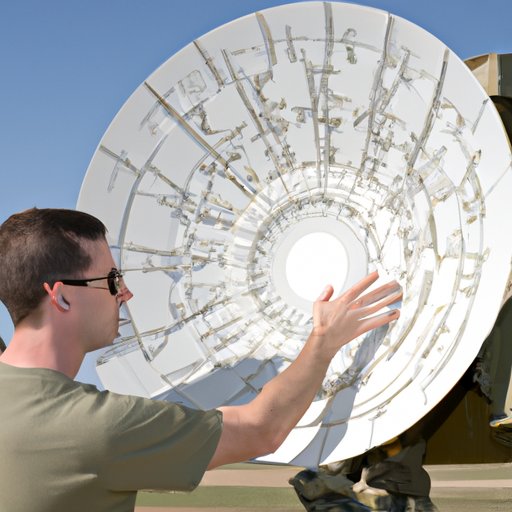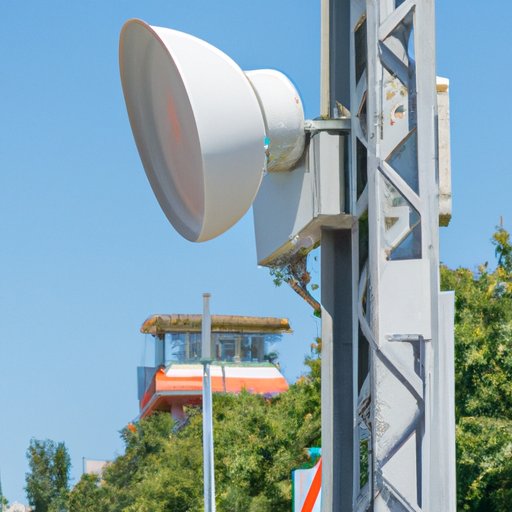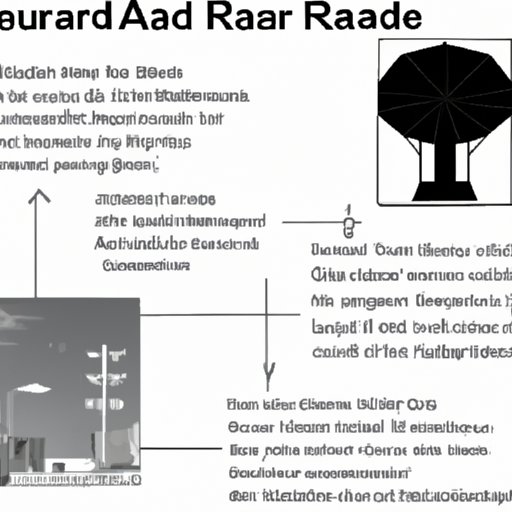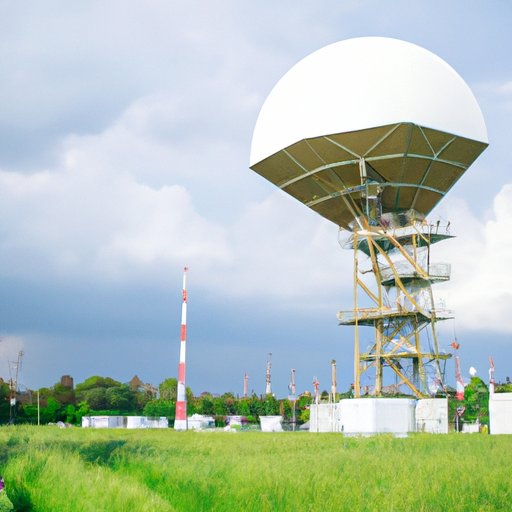Introduction
Radar is an acronym for radio detection and ranging, and it is a type of technology that uses radio waves to detect objects and measure their distance, speed, and other characteristics. This technique has revolutionized the way we navigate our lives and has been used in a variety of industries since its inception. In this article, we will explore how radar works, the components of a radar system, the benefits and limitations of radar, and some of the applications of radar in everyday life.
Exploring the Physics Behind Radar
At the heart of radar technology is the reflection of radio waves. A transmitter sends out a pulse of radio waves, which travel through the air until they encounter an object. The object reflects the radio waves back toward the source, and the receiver detects the reflected radio waves. By measuring the time between when the radio waves were sent and when they were received, the distance of the object from the source can be calculated.
Another important concept in understanding how radar works is the Doppler effect. This phenomenon occurs when waves are reflected off a moving object, such as an airplane or car. The frequency of the reflected waves will be higher if the object is moving toward the source, and lower if the object is moving away from the source. By analyzing the Doppler shift of the reflected waves, the speed at which the object is moving can be determined.
By combining the information obtained from the reflection of radio waves and the Doppler effect, radar can calculate the distance, speed, and direction of an object. This allows radar systems to track and monitor moving objects with great precision.

Examining the Components of a Radar System
A radar system is made up of four main components: a transmitter, an antenna, a receiver, and a processor. The transmitter is responsible for generating the radio waves that are reflected off the target. The antenna is used to transmit and receive the radio waves, while the receiver is used to detect the reflected waves. Finally, the processor is used to analyze the data collected by the receiver and display the results.
The antenna is one of the most important components of a radar system, as it is responsible for both transmitting and receiving the radio waves. Different types of antennas can be used depending on the application, such as a parabolic dish for long-range detection or a phased array for short-range detection. The receiver is also important, as it must be able to detect even the weakest signals and filter out any noise that might interfere with the signal.
The Benefits and Limitations of Radar
Radar has many advantages over traditional methods of navigation and surveillance. For example, radar can operate in any weather conditions and is not affected by fog, rain, or snow. Radar also has a much longer range than other methods, allowing for greater coverage of an area. Additionally, radar can detect objects that are beyond the line of sight, such as aircraft flying at high altitudes.
However, radar also has some drawbacks. For example, radar signals can be blocked by certain objects, such as mountains or buildings. Additionally, radar systems require a great deal of power to operate, making them expensive to maintain. Furthermore, radar systems are prone to interference from other sources, such as radio transmissions or power lines.

Applications of Radar in Everyday Life
Radar is used in a wide variety of settings, from air traffic control to weather monitoring. Air traffic controllers use radar to monitor the positions of aircraft and ensure that they remain safely separated from each other. Weather monitoring systems use radar to detect precipitation, wind speed and direction, and other meteorological phenomena. Finally, military forces use radar to detect enemy aircraft and ships and to monitor potential threats.

A History of Radar Development
The first radar system was developed by German physicist Christian Hülsmeyer in 1904. He named it the “telemobiloscope” and used it to detect ships at sea. In the 1930s, British scientists developed the cavity magnetron, which allowed for the generation of short radio pulses and improved the performance of radar systems. During World War II, radar was used extensively by both Allied and Axis forces to detect enemy aircraft and ships.
Since then, radar technology has continued to evolve, with modern systems being much more sophisticated than their predecessors. Today, radar is used in a variety of settings, from air traffic control to autonomous vehicles. As technology continues to progress, so too does the capability of radar systems.
Conclusion
Radar technology is a powerful tool that has revolutionized the way we navigate our lives. By combining the principles of reflection and the Doppler effect, radar systems can calculate the distance, speed, and direction of objects with great accuracy. Additionally, radar has a number of benefits, including its ability to operate in any weather condition and its long range. Despite these advantages, radar also has some drawbacks, such as its susceptibility to interference and its high cost of operation. Despite these limitations, radar remains an invaluable tool for navigation and surveillance.
(Note: Is this article not meeting your expectations? Do you have knowledge or insights to share? Unlock new opportunities and expand your reach by joining our authors team. Click Registration to join us and share your expertise with our readers.)
